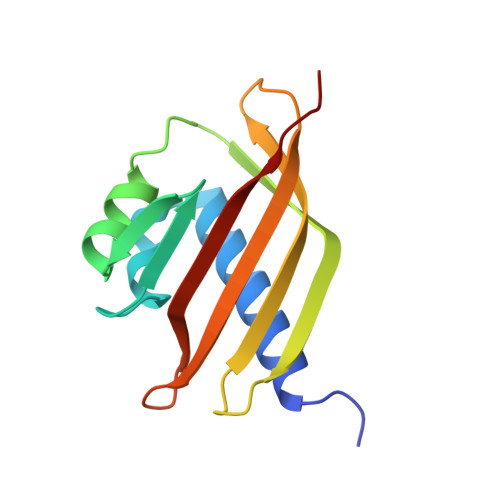Nuclear protein import is decreased by engineered mutants of nuclear transport factor 2 (NTF2) that do not bind GDP-Ran.
Clarkson, W.D., Corbett, A.H., Paschal, B.M., Kent, H.M., McCoy, A.J., Gerace, L., Silver, P.A., Stewart, M.(1997) J Mol Biology 272: 716-730
- PubMed: 9368653
- DOI: https://doi.org/10.1006/jmbi.1997.1255
- Primary Citation of Related Structures:
1AR0, 1ASK - PubMed Abstract:
Nuclear transport factor 2 (NTF2) is associated with the translocation stage of nuclear protein import and binds both to nuclear pore proteins (nucleoporins) containing phenylalanine-rich repeats and to the Ras family GTPase Ran. In this study we probed the role of the NTF2-Ran interaction in nuclear protein import using site-directed mutants of NTF2 that interfere with its interaction with GDP-Ran. The design of these mutants was based on the X-ray crystal structure of NTF2 and was concentrated on conserved residues in and around the molecule's hydrophobic cavity. The mutant NTF2 cDNAs were expressed in Escherichia coli. Purified mutant proteins retained the interaction with FxFG-repeat nucleoporins, but several mutants in the negatively charged residues that surround the NTF2 cavity or in residues in the cavity itself were unable to bind GDP-Ran in vitro. The crystal structure of the E42K mutant protein showed significant structural changes only in this side-chain, indicating that it participated directly in the interaction with GDP-Ran. In permeabilised cell nuclear protein import assays, only wild-type NTF2 and mutants that bound GDP-Ran were functional. Furthermore, when the NTF2 E42K and D92N/D94N NTF2 mutants that failed to bind GDP-Ran in vitro were substituted for the chromosomal yeast NTF2, the yeast cells became non-viable, whereas yeast substituted with wild-type human NTF2 remained viable. We conclude that interaction between NTF2 and GDP-Ran is important for efficient nuclear protein import.
- MRC Laboratory of Molecular Biology, Cambridge, UK.
Organizational Affiliation:
















